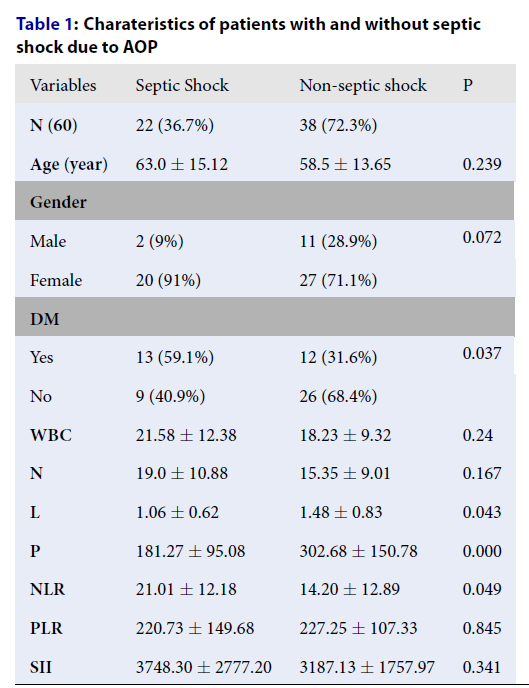The value of hematological indices as predictors of septic shock in acute obstructive pyelonephritis
DOI:
https://doi.org/10.15419/bmrat.v11i6.895Keywords:
Hematological indices, septic shock, acute obstructive pyelonephritis, NLR, PLR, SIIAbstract
Introduction: Acute Obstructive Pyelonephritis (AOP) is a severe and prevalent infection within the urinary system, prone to rapidly escalate into urosepsis and potentially result in septic shock, which poses a significant mortality risk. This study investigates the potential of certain blood parameters to serve as indicators for predicting the likelihood of developing septic shock in AOP patients.
Methods: We conducted a retrospective cohort study involving 60 patients who were diagnosed with AOP as a result of urinary tract stones or benign ureteral strictures, enrolled from August 2023 to February 2024. Key hematological data, including white blood cell count, neutrophil, lymphocyte, and platelet levels, as well as ratios such as neutrophil-to-lymphocyte ratio (NLR) and platelet-to-lymphocyte ratio (PLR), alongside the systemic immune-inflammation index (SII), were extracted from complete blood counts recorded at hospital admission. These parameters were analyzed using univariate and multivariate logistic regression models to assess their predictive value for septic shock.
Results: The analysis revealed that 22 out of 60 participants (36.7%) progressed to septic shock following AOP. Notably, the likelihood of septic shock was higher in patients with diabetes mellitus (DM) (p = 0.037), those with diminished lymphocyte (p = 0.043) and platelet counts (p < 0.001), and elevated neutrophil-to-platelet ratio (p = 0.049) when compared to the non-septic shock cohort. Furthermore, multivariate logistic regression identified DM, NLR ≥ 8.7 (OR = 12.529, p = 0.030), and platelet counts below 150 x 109/L (OR = 4.375, p = 0.049) as independent predictors of septic shock.
Conclusion: Elevated NLR, reduced platelet count, and the presence of DM are significant predictors for the development of septic shock in patients afflicted with AOP. These findings suggest that closer monitoring and management of these parameters could be crucial in the early identification and treatment of patients at higher risk of septic shock.

Published
Issue
Section
License
Copyright The Author(s) 2017. This article is published with open access by BioMedPress. This article is distributed under the terms of the Creative Commons Attribution License (CC-BY 4.0) which permits any use, distribution, and reproduction in any medium, provided the original author(s) and the source are credited.
